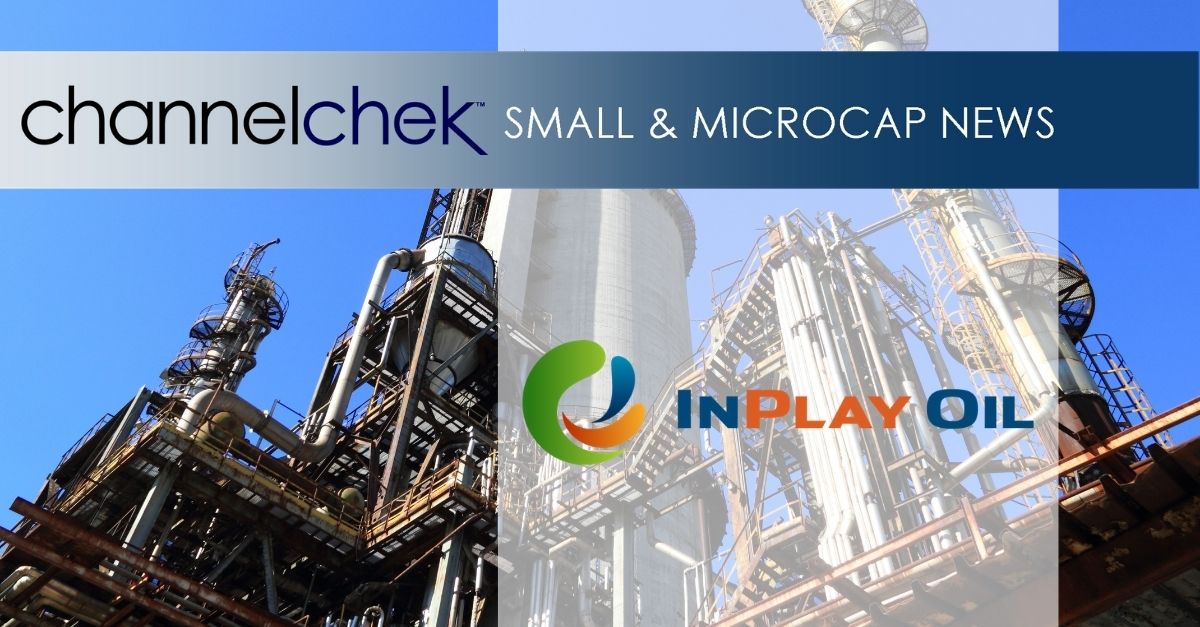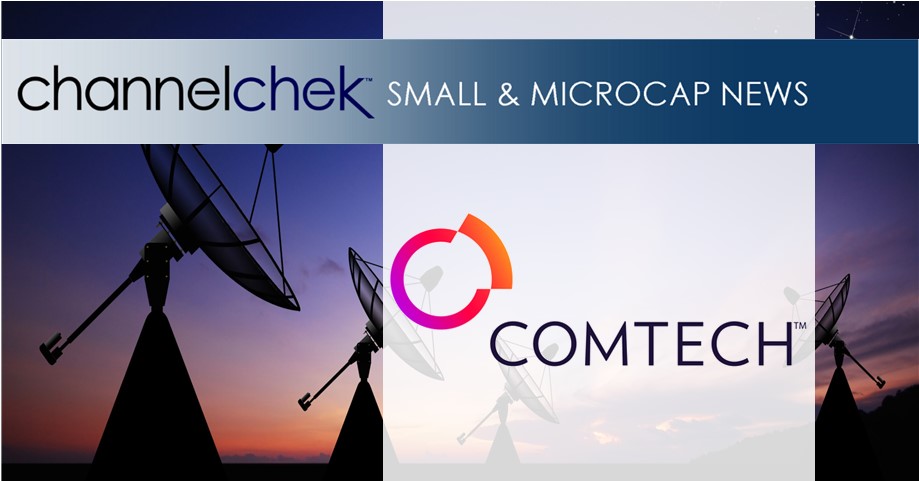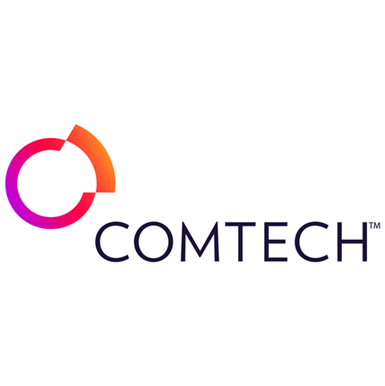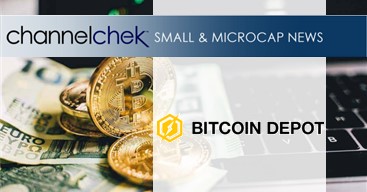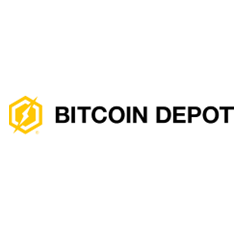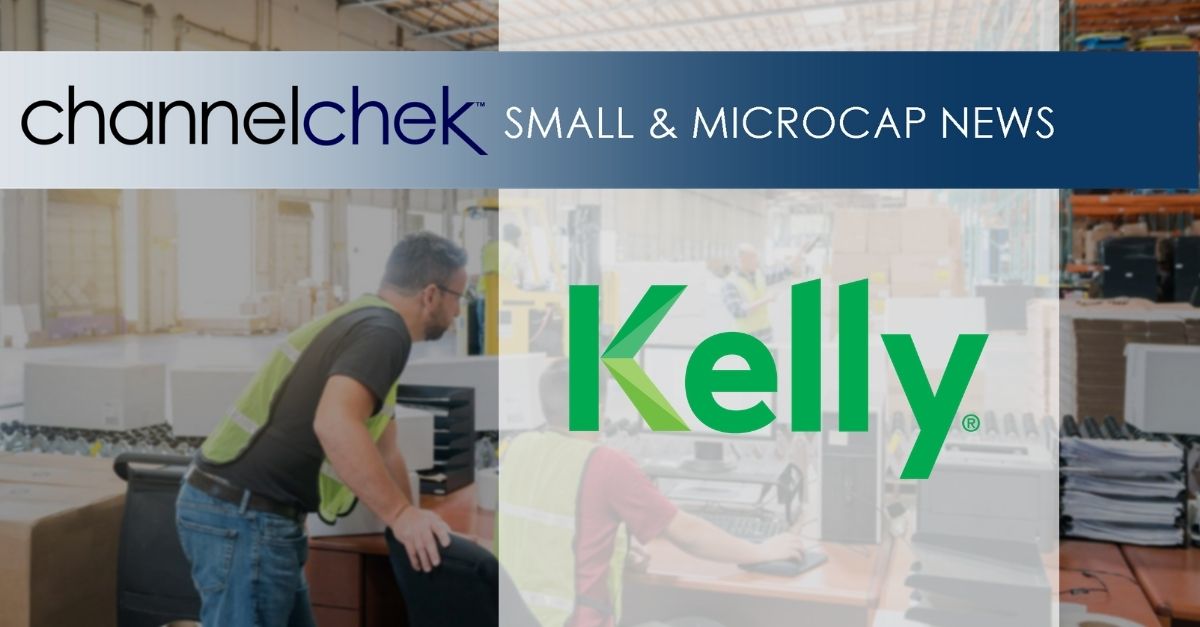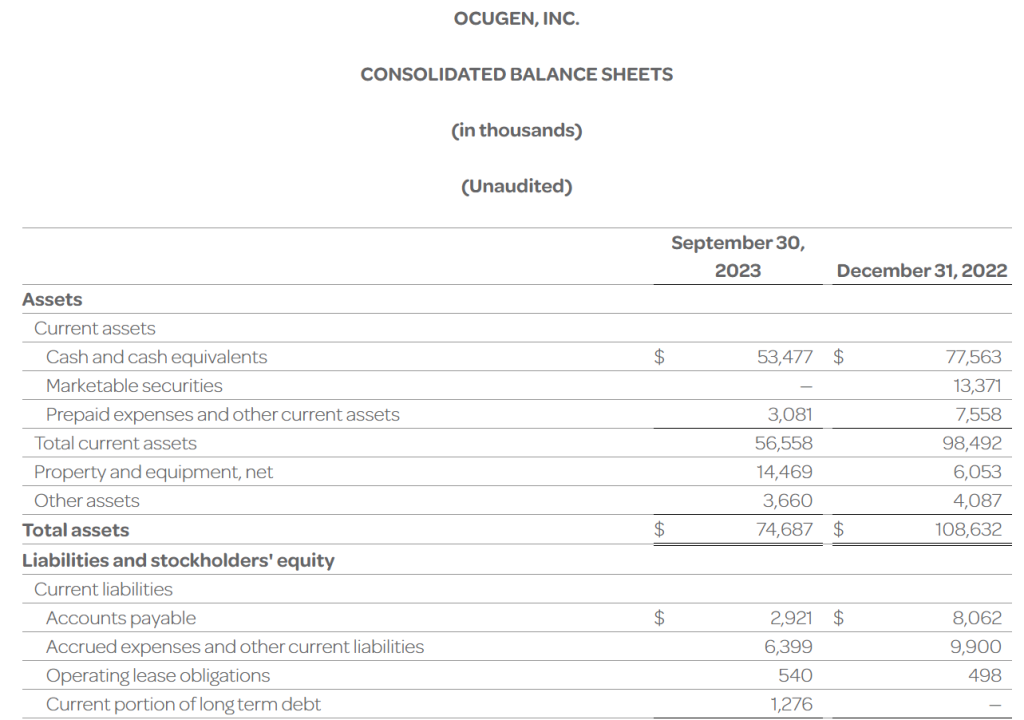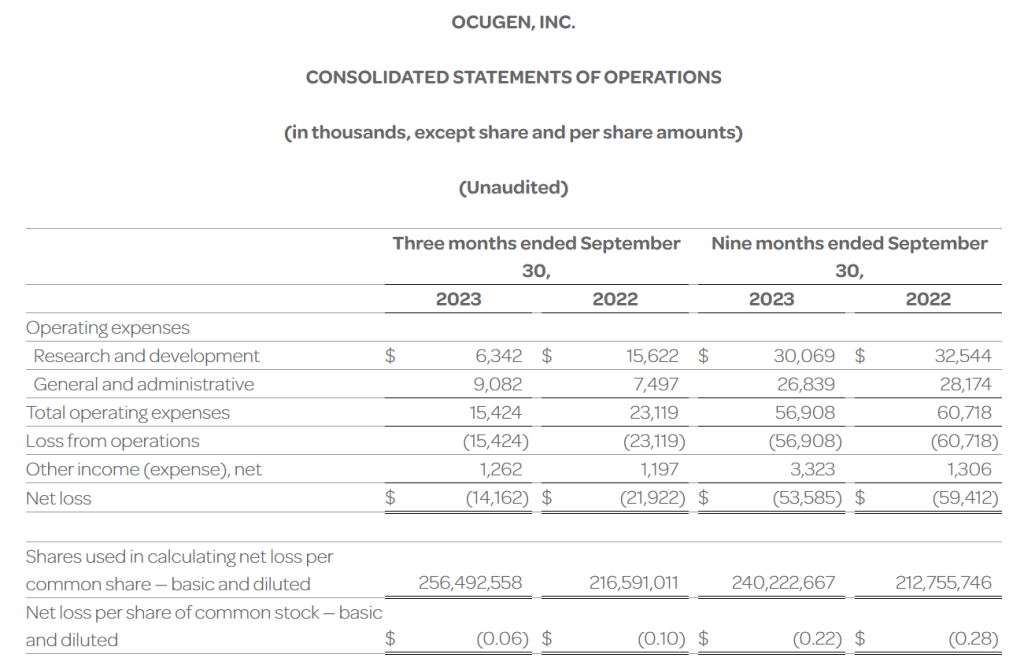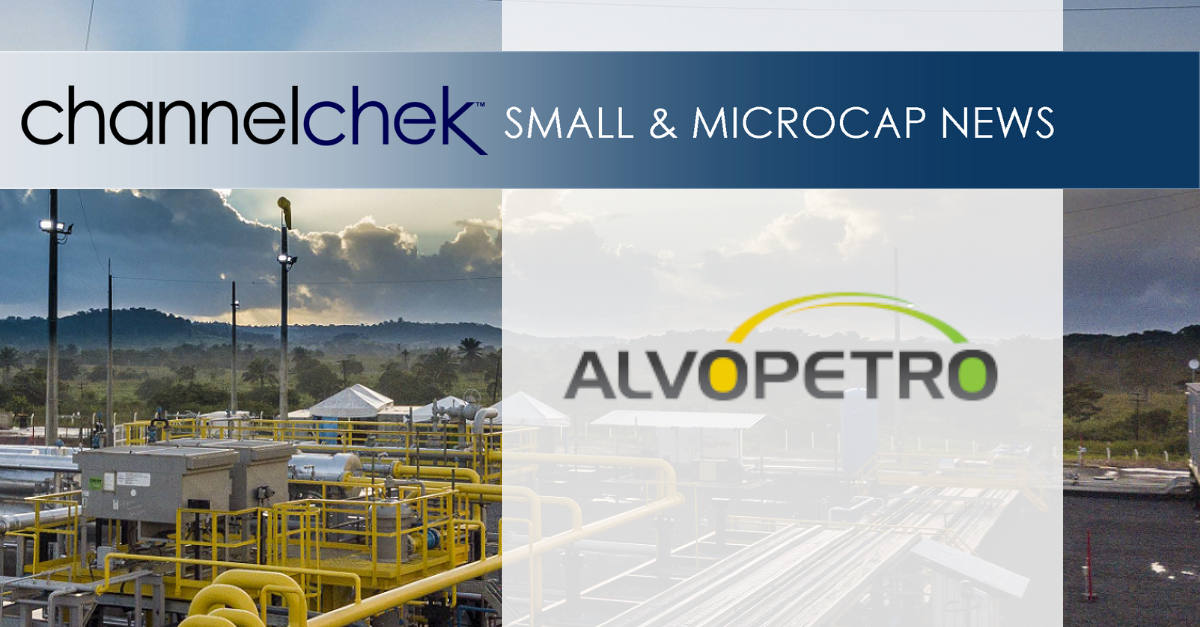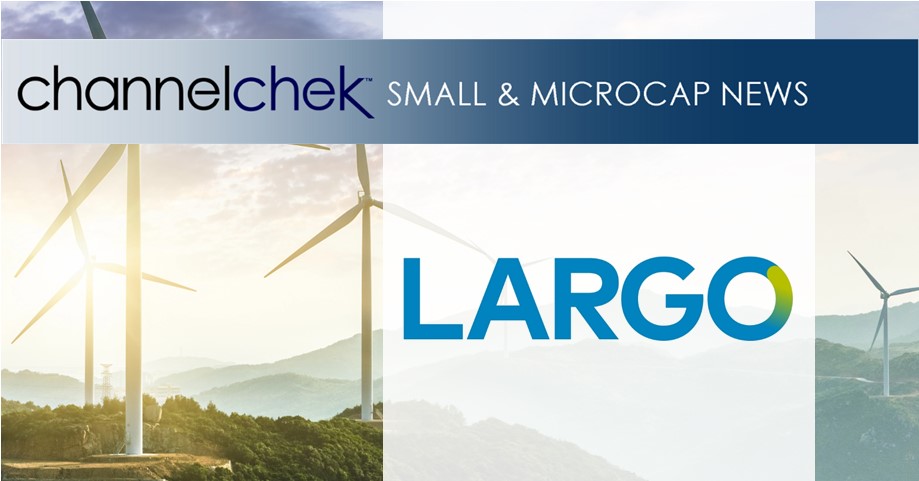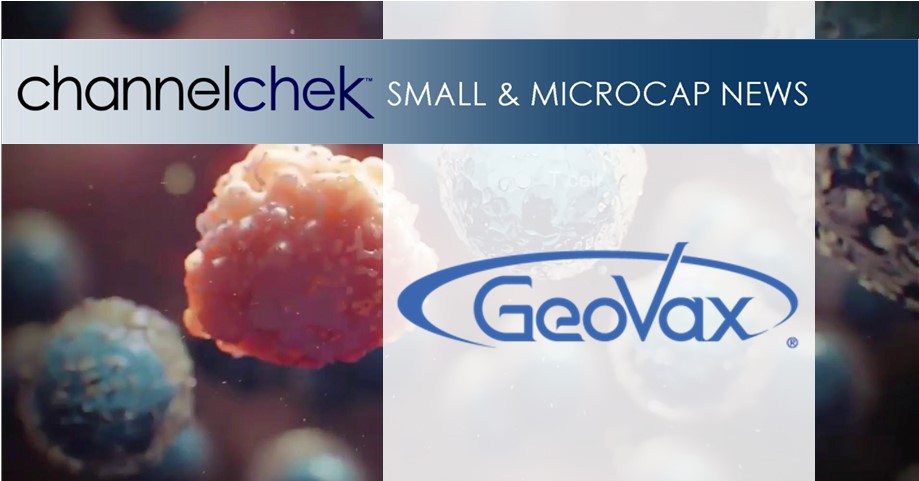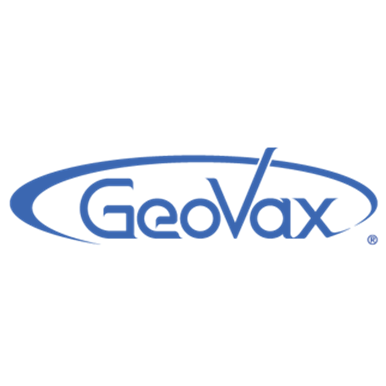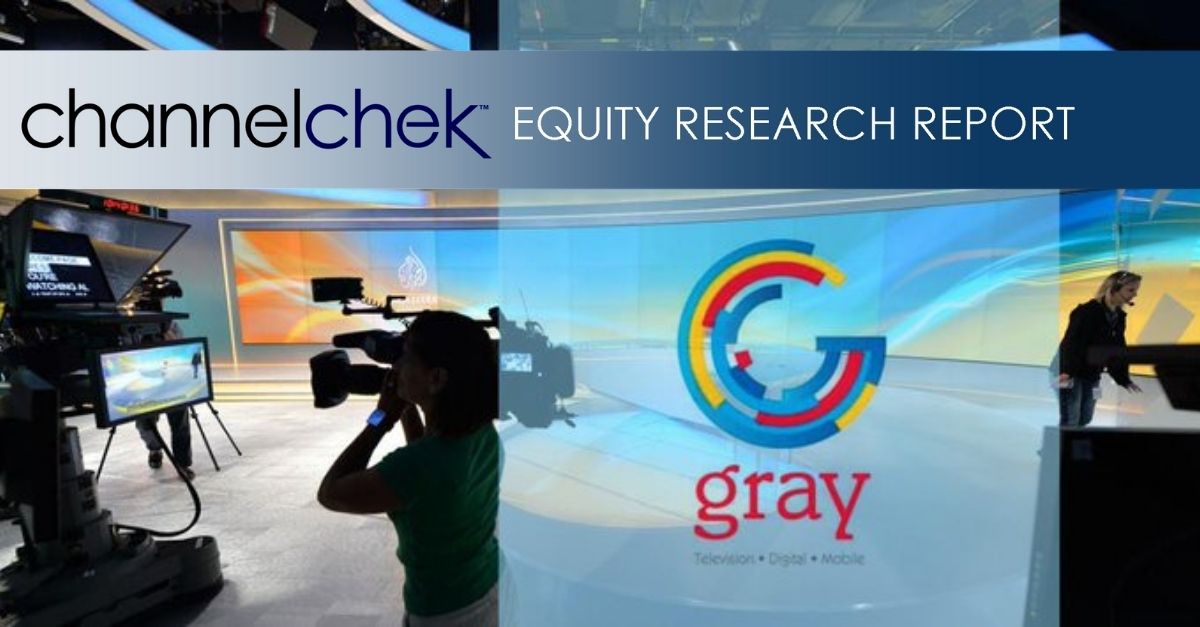
Research News and Market Data on IPOOF
09 Nov, 2023, 08:00 ET
CALGARY AB, Nov. 8, 2023 /CNW/ – InPlay Oil Corp. (TSX: IPO) (OTCQX: IPOOF) (“InPlay” or the “Company”) announces its financial and operating results for the three and nine months ended September 30, 2023. InPlay’s condensed unaudited interim financial statements and notes, as well as Management’s Discussion and Analysis (“MD&A”) for the three and nine months ended September 30, 2023 will be available at “www.sedar.com” and our website at “www.inplayoil.com“.
Third Quarter 2023 Financial & Operating Highlights
- Realized average quarterly production of 9,003 boe/d(1) (57% light crude oil and NGLs), a 6% increase compared to 8,474 boe/d (57% light crude oil and NGLs) in the second quarter of 2023 despite extended curtailments and unplanned downtime experienced in the quarter of approximately 550 boe/d.
- Generated strong quarterly adjusted funds flow (“AFF”)(2) of $25.2 million ($0.28 per basic share(3)), an increase of 16% from the second quarter of 2023.
- Returned $4.0 million ($12.0 million in the first nine months of 2023) directly to shareholders through our monthly base dividend.
- Increased revenues by 17% to $46.7 million compared to $39.8 million in the second quarter of 2023.
- Improved field operating netbacks(3) by 8% compared to the second quarter of 2023.
- Achieved net income of $7.5 million ($0.08 per basic share; $0.08 per diluted share). InPlay has now returned to a retained earnings position on the balance sheet demonstrating that the Company has generated positive earnings since inception (net of dividends paid).
- Invested $27.5 million to drill, complete and equip three (2.9 net) Extended Reach Horizontal (“ERH”) wells in Willesden Green, three (3.0 net) ERH wells in Pembina and one (0.35 net) non-operated ERH well in Willesden Green.
Fourth Quarter Operational Update:
- Drilled and completed two (1.6 net) ERH wells in Willesden Green which were recently put on production.
- The three (3.0 net) Pembina ERH wells brought on production shortly before start of the quarter are producing at strong rates of approximately 260 boe/d(1) (87% light crude oil and NGLs) per well.
- Brought online our second natural gas facility upgrade at Leafland, which has increased operated facility capacity by 66% while improving our liquids yield by 40%. Production benefits are already being realized through reduced back pressure on wells, lower declines and providing more consistent runtimes.
- Current production is 9,700 boe/d(1) (60% light crude oil and NGLs) based on field estimates., excluding the impact of the two (1.6 net) ERH wells in Willesden Green showing strong flowback rates in the early clean up stage.
Financial and Operating Results:
| Three months ended September 30 | Nine months ended September 30 | |||
| 2023 | 2022 | 2023 | 2022 | |
| Financial (CDN) ($millions) | ||||
| Oil and natural gas sales | 46.7 | 57.0 | 131.7 | 180.4 |
| Adjusted funds flow(2) | 25.2 | 30.2 | 68.2 | 100.5 |
| Per share – basic(4) | 0.28 | 0.35 | 0.77 | 1.16 |
| Per share – diluted(4) | 0.28 | 0.33 | 0.76 | 1.10 |
| Per boe(4) | 30.40 | 34.61 | 28.30 | 41.23 |
| Comprehensive income | 7.5 | 15.4 | 21.1 | 63.2 |
| Per share – basic | 0.08 | 0.18 | 0.24 | 0.73 |
| Per share –diluted | 0.08 | 0.17 | 0.23 | 0.69 |
| Capital expenditures – PP&E and E&E | 27.5 | 24.5 | 69.8 | 64.0 |
| Property acquisitions (dispositions) | – | – | 0.3 | – |
| Net Corporate acquisitions(3) | – | 0.1 | – | 0.5 |
| Net debt(2) | (48.8) | (45.6) | (48.8) | (45.6) |
| Shares outstanding | 90.3 | 87.2 | 90.3 | 87.2 |
| Basic weighted-average shares | 89.3 | 87.1 | 88.7 | 86.8 |
| Diluted weighted-average shares | 90.8 | 91.2 | 90.2 | 91.0 |
| Operational | ||||
| Daily production volumes | ||||
| Light and medium crude oil (bbls/d) | 3,697 | 3,717 | 3,714 | 3,718 |
| Natural gas liquids (bbls/d) | 1,420 | 1,432 | 1,355 | 1,358 |
| Conventional natural gas (Mcf/d) | 23,316 | 26,075 | 22,581 | 23,129 |
| Total (boe/d) | 9,003 | 9,495 | 8,832 | 8,931 |
| Realized prices(4) | ||||
| Light and medium crude oil & NGLs ($/bbls) | 86.28 | 96.98 | 82.09 | 103.89 |
| Conventional natural gas ($/Mcf) | 2.82 | 4.60 | 2.94 | 5.77 |
| Total ($/boe) | 56.35 | 65.24 | 54.63 | 74.00 |
| Operating netbacks ($/boe)(3) | ||||
| Oil and natural gas sales | 56.35 | 65.24 | 54.63 | 74.00 |
| Royalties | (6.50) | (12.14) | (6.71) | (11.49) |
| Transportation expense | (0.85) | (1.02) | (0.90) | (1.15) |
| Operating costs | (15.31) | (12.53) | (15.07) | (12.58) |
| Operating netback(3) | 33.69 | 39.55 | 31.95 | 48.78 |
| Realized (loss) on derivative contracts | 1.76 | (0.59) | 1.27 | (2.75) |
| Operating netback (including realized derivative contracts) (3) | 35.45 | 38.96 | 33.22 | 46.03 |
Third Quarter 2023 Financial & Operations Overview:
The third quarter of 2023 was a capital intensive quarter for the Company. InPlay invested $27.5 million drilling, completing and equipping three (2.9 net) ERH wells in Willesden Green and three (3.0 net) ERH wells in Pembina. The Company also participated in one (0.35 net) non-operated ERH well in Willesden Green not previously budgeted.
In addition to the upgrade of a natural gas facility in the second quarter, the Company completed a second material upgrade of a gas facility during the third quarter which was brought back on-line in early October. This project modernized existing infrastructure in the Leafland area of Willesden Green and has resulted in an approximate 66% increase to the natural gas processing capability of this facility. The addition of a refrigeration plant to this facility has also improved NGL recoveries by approximately 40%. This additional capacity has lowered field pressures in the area which is expected to improve production and reduce declines on existing wells and future drilling locations. This upgrade is expected to accommodate future development in Leafland and provide more consistent and reliable processing capacity within the Company’s operational control.
The Company has been focused on a high oil weighted drilling program. Three (2.9 net) Willesden Green ERH wells came on production in August into high pressure pipeline systems with average initial production (“IP”) rates per well of 203 boe/d(1) (94% light crude oil and NGLs) over their first 30 days and 215 boe/d(1) (93% light crude oil and NGLs) over their first 60 days. The impact of our facility improvements has enabled these wells to have multiple weeks of flat to improving production rates and after two months they continue to produce at an average rate of approximately 280 boe/d(1) (87% light crude oil and NGLs) per well. The production witnessed from the most recent six wells drilled in Willesden Green have recently benefitted from reduced field pressures and consistent facility runtimes resulting from our operated natural gas facility expansions.
In addition, three (3.0 net) Pembina ERH wells came on production at the end of September with average initial production (“IP”) rates per well of 227 boe/d(1) (88% light crude oil and NGLs) over their first 30 days. These wells have also continued to clean up after completions and are currently producing approximately 260 boe/d(1) (87% light crude oil and NGLs) per well.
Production for the three months ended September 30, 2023 averaged 9,003 boe/d(1) (57% light crude oil and NGLs), 6% higher compared to the three months ended June 30, 2023. Third quarter production was impacted by approximately 550 boe/d (52% light crude oil and NGLs) primarily due to the continuation of multiple third-party natural gas takeaway constraints on our operations and the commissioning of our expanded gas facility that slightly exceeded the anticipated startup timeline. The continued third-party facility outages forced the redirection of associated natural gas to less favorable third-party facilities impacting production through increased back pressure on producing wells as well as higher operating costs.
InPlay generated AFF(2) of $25.2 million ($0.28 per basic share) an increase of 16% from the second quarter of 2023. The Company achieved net income of $7.5 million ($0.08 per basic share; $0.08 per diluted share) and has returned to a retained earnings position on the balance sheet. This is evidence of the long-term sustainability of the Company as positive earnings have been generated since inception (net of dividends paid).
Outlook and Operations Update(5)
The majority of InPlay’s capital program for the year has been completed. The Company’s drilling program for the fourth quarter is underway with two (1.6 net) ERH wells in Willesden Green having been drilled to date. These two wells have been completed and are in the early stages of production. In addition, a 1.0 net Belly River well is now planned to be drilled in the fourth quarter and anticipated to come online in December with its first full month of production expected to commence in January 2024. This well replaces a previously planned one (0.8 net) Willesden Green well.
The investments made in increasing natural gas takeaway capacity through the two facility upgrades in Willesden Green will be important in alleviating potential production issues from third party facility outages going forward. These upgrades have increased our natural gas processing and takeaway capacity in Leafland from approximately 8,400 mcf/d to 17,300 mcf/d. These projects have already shown their importance by reducing back pressure on wells, lowering declines and providing more consistent runtimes, and the reduction in field pressures has the added benefit of improving our liquids weighting. Current production is approximately 9,700 boe/d(1) (60% light crude oil and NGLs) based on field estimates, excluding the impact of two (1.6 net) ERH wells in Willesden Green which are in early stage cleanup and with only four days of production are showing strong flowback rates.
As a result, the fourth quarter is forecasted to be our highest production quarter of the year and given the strong crude oil pricing environment and weak Canadian dollar, the fourth quarter is also projected to be our highest AFF quarter for the year. As the majority of the 2023 capital program was completed by the end of the third quarter, significant free adjusted funds flow (“FAFF”)(3) is expected to be generated in the fourth quarter resulting in a sizeable reduction to net debt prior to year-end.
The Company’s updated 2023 drilling program will be more active than previously planned by approximately 0.6 net wells consisting of 21 (17.1 net) horizontal wells. The changes include an additional one (0.35 net) non-op ERH Willesden Green well and a 1.0 net Belly River well instead of a previously planned one (0.8 net) Willesden Green well. As a result, InPlay has revised its 2023 development capital expenditure guidance to approximately $83 million(5). The timing of the Belly River well will not materially add to 2023 production but will pave the way for potentially an increased Belly River program in 2024 given the high oil weighting and high netback nature of this play. This area is defined by high light-oil weightings that receive a premium to the Mixed Sweet Blend (“MSW”), our pricing benchmark. Our two recent horizontal wells drilled in the area came online in November 2022 and have had operating netbacks of approximately $71.25/boe since being brought on production, and light oil and liquids weightings of approximately 94% to date. These wells have had very low decline rates over this period with average IP rates per well of 98 boe/d (97% light crude oil and NGLs) and 115 boe/d (92% light crude oil and NGLs) over their first 90 and 335 days respectively.
The Company remains committed to providing strong returns to shareholders. Our monthly base dividend of $0.015/share represents approximately a 7% yield at the current share price. To date, the Company has returned $16 million to shareholders through dividends since our inaugural dividend was declared in November 2022, representing approximately 7% of our current market capitalization while maintaining a strong financial position. The generation of shareholder returns through significant FAFF, top-tier production per share growth while maintaining low leverage all remain top priorities of InPlay.
InPlay would like to thank our staff, contractors, and suppliers for their continued dedication and execution, and thank the Board of Directors and shareholders for their continued guidance and support. We look forward to releasing our 2024 capital budget and associated guidance in January.
| For further information please contact: | ||
| Doug Bartole President and Chief Executive Officer InPlay Oil Corp. Telephone: (587) 955-0632 | Darren Dittmer Chief Financial Officer InPlay Oil Corp. Telephone: (587) 955-0634 | |
| Notes: | ||
| 1. | See “Production Breakdown by Product Type” at the end of this press release. | |
| 2. | Capital management measure. See “Non-GAAP and Other Financial Measures” contained within this press release. | |
| 3. | Non-GAAP financial measure or ratio that does not have a standardized meaning under International Financial Reporting Standards (IFRS) and GAAP and therefore may not be comparable with the calculations of similar measures for other companies. Please refer to “Non-GAAP and Other Financial Measures” contained within this press release. | |
| 4. | Supplementary financial measure. See “Non-GAAP and Other Financial Measures” contained within this press release. | |
| 5. | See “Reader Advisories – Forward Looking Information and Statements” for key budget and underlying assumptions related to our previous and updated 2023 capital program and associated guidance. | |
Reader Advisories
Non-GAAP and Other Financial Measures
Throughout this press release and other materials disclosed by the Company, InPlay uses certain measures to analyze financial performance, financial position and cash flow. These non-GAAP and other financial measures do not have any standardized meaning prescribed under GAAP and therefore may not be comparable to similar measures presented by other entities. The non-GAAP and other financial measures should not be considered alternatives to, or more meaningful than, financial measures that are determined in accordance with GAAP as indicators of the Company performance. Management believes that the presentation of these non-GAAP and other financial measures provides useful information to shareholders and investors in understanding and evaluating the Company’s ongoing operating performance, and the measures provide increased transparency and the ability to better analyze InPlay’s business performance against prior periods on a comparable basis.
Non-GAAP Financial Measures and Ratios
Included in this document are references to the terms “free adjusted funds flow”, “operating income”, “operating netback per boe”, “operating income profit margin”, “Net Debt to EBITDA”, “Net Corporate Acquisitions”, “Debt adjusted production per share” and “EV / DAAFF”. Management believes these measures and ratios are helpful supplementary measures of financial and operating performance and provide users with similar, but potentially not comparable, information that is commonly used by other oil and natural gas companies. These terms do not have any standardized meaning prescribed by GAAP and should not be considered an alternative to, or more meaningful than “profit (loss) before taxes”, “profit (loss) and comprehensive income (loss)”, “adjusted funds flow”, “capital expenditures”, “corporate acquisitions, net of cash acquired”, “net debt”, “weighted average number of common shares (basic)” or assets and liabilities as determined in accordance with GAAP as a measure of the Company’s performance and financial position.
Free Adjusted Funds Flow
Management considers FAFF an important measure to identify the Company’s ability to improve its financial condition through debt repayment and its ability to provide returns to shareholders. FAFF should not be considered as an alternative to or more meaningful than AFF as determined in accordance with GAAP as an indicator of the Company’s performance. FAFF is calculated by the Company as AFF less exploration and development capital expenditures and property dispositions (acquisitions) and is a measure of the cashflows remaining after capital expenditures before corporate acquisitions that can be used for additional capital activity, corporate acquisitions, repayment of debt or decommissioning expenditures or potentially return of capital to shareholders. Refer to the “Forward Looking Information and Statements” section for a calculation of forecast FAFF.
Operating Income/Operating Netback per boe/Operating Income Profit Margin
InPlay uses “operating income”, “operating netback per boe” and “operating income profit margin” as key performance indicators. Operating income is calculated by the Company as oil and natural gas sales less royalties, operating expenses and transportation expenses and is a measure of the profitability of operations before administrative, share-based compensation, financing and other non-cash items. Management considers operating income an important measure to evaluate its operational performance as it demonstrates its field level profitability. Operating income should not be considered as an alternative to or more meaningful than net income as determined in accordance with GAAP as an indicator of the Company’s performance. Operating netback per boe is calculated by the Company as operating income divided by average production for the respective period. Management considers operating netback per boe an important measure to evaluate its operational performance as it demonstrates its field level profitability per unit of production. Operating income profit margin is calculated by the Company as operating income as a percentage of oil and natural gas sales. Management considers operating income profit margin an important measure to evaluate its operational performance as it demonstrates how efficiently the Company generates field level profits from its sales revenue. Refer below for a calculation of operating income, operating netback per boe and operating income profit margin.
| (thousands of dollars) | Three Months Ended September 30 | Nine Months Ended September 30 | ||
| 2023 | 2022 | 2023 | 2022 | |
| Revenue | 46,672 | 56,985 | 131,735 | 180,429 |
| Royalties | (5,387) | (10,607) | (16,178) | (28,017) |
| Operating expenses | (12,677) | (10,946) | (36,343) | (30,660) |
| Transportation expenses | (698) | (888) | (2,190) | (2,802) |
| Operating income | 27,910 | 34,544 | 77,024 | 118,950 |
| Sales volume (Mboe) | 828.3 | 873.5 | 2,411.2 | 2,438.1 |
| Per boe | ||||
| Revenue | 56.35 | 65.24 | 54.63 | 74.00 |
| Royalties | (6.50) | (12.14) | (6.71) | (11.49) |
| Operating expenses | (15.31) | (12.53) | (15.07) | (12.58) |
| Transportation expenses | (0.85) | (1.02) | (0.90) | (1.15) |
| Operating netback per boe | 33.69 | 39.55 | 31.95 | 48.78 |
| Operating income profit margin | 60 % | 61 % | 58 % | 66 % |
Net Debt to EBITDA
Management considers Net Debt to EBITDA an important measure as it is a key metric to identify the Company’s ability to fund financing expenses, net debt reductions and other obligations. EBITDA is calculated by the Company as adjusted funds flow before interest expense. When this measure is presented quarterly, EBITDA is annualized by multiplying by four. When this measure is presented on a trailing twelve month basis, EBITDA for the twelve months preceding the net debt date is used in the calculation. This measure is consistent with the EBITDA formula prescribed under the Company’s Senior Credit Facility. Net Debt to EBITDA is calculated as Net Debt divided by EBITDA. Refer to the “Forward Looking Information and Statements” section for a calculation of forecast Net Debt to EBITDA.
Net Corporate Acquisitions
Management considers Net corporate acquisitions an important measure as it is a key metric to evaluate the corporate acquisition in comparison to other transactions using the negotiated consideration value and ignoring changes to the fair value of the share consideration between the signing of the definitive agreement and the closing of the transaction. Net corporate acquisitions should not be considered as an alternative to or more meaningful than “Corporate acquisitions, net of cash acquired” as determined in accordance with GAAP as an indicator of the Company’s performance. Net corporate acquisitions is calculated as total consideration with share consideration adjusted to the value negotiated with the counterparty, less working capital balances assumed on the corporate acquisition. Refer below for a calculation of Net corporate acquisitions and reconciliation to the nearest GAAP measure, “Corporate acquisitions, net of cash acquired”.
| (thousands of dollars) | Three Months Ended September 30 | Nine Months Ended September 30 | ||
| 2023 | 2022 | 2023 | 2022 | |
| Corporate acquisitions, net of cash acquired | – | 89 | – | 501 |
| Share consideration | – | – | – | – |
| Non-cash working capital acquired | – | – | – | – |
| Derivative contracts | – | – | – | – |
| Net Corporate acquisitions | – | 89 | – | 501(1) |
| (1) During the nine months ended September 30, 2022, the acquired amount of Property, plant and equipment was adjusted by $0.5 million as a result of adjustments relating to the acquisition of Prairie Storm, with a corresponding increase in the recognized amounts of Accounts payable and accrued liabilities. | ||||
Production per Debt Adjusted Share
InPlay uses “Production per debt adjusted share” as a key performance indicator. Debt adjusted shares should not be considered as an alternative to or more meaningful than common shares as determined in accordance with GAAP as an indicator of the Company’s performance. Debt adjusted shares is a non-GAAP measure used in the calculation of Production per debt adjusted share and is calculated by the Company as common shares outstanding plus the change in net debt divided by the Company’s current trading price on the TSX, converting net debt to equity. Debt adjusted shares should not be considered as an alternative to or more meaningful than weighted average number of common shares (basic) as determined in accordance with GAAP as an indicator of the Company’s performance. Management considers Debt adjusted share to be a key performance indicator as it adjusts for the effects of capital structure in relation to the Company’s peers. Production per debt adjusted share is calculated by the Company as production divided by debt adjusted shares. Management considers Production per debt adjusted share is a key performance indicator as it adjusts for the effects of changes in annual production in relation to the Company’s capital structure. Refer to the “Forward Looking Information and Statements” section for a calculation of forecast Production per debt adjusted share.
EV / DAAFF
InPlay uses “enterprise value to debt adjusted AFF” or “EV/DAAFF” as a key performance indicator. EV/DAAFF is calculated by the Company as enterprise value divided by debt adjusted AFF for the relevant period. Debt adjusted AFF (“DAAFF”) is calculated by the Company as adjusted funds flow plus financing costs. Enterprise value is a capital management measure that is used in the calculation of EV/DAAFF. Enterprise value is calculated as the Company’s market capitalization plus working capital (net debt). Management considers enterprise value a key performance indicator as it identifies the total capital structure of the Company. Management considers EV/DAAFF a key performance indicator as it is a key metric used to evaluate the sustainability of the Company relative to other companies while incorporating the impact of differing capital structures. Refer to the “Forward Looking Information and Statements” section for a calculation of forecast EV/DAAFF.
Capital Management Measures
Adjusted Funds Flow
Management considers adjusted funds flow to be an important measure of InPlay’s ability to generate the funds necessary to finance capital expenditures. Adjusted funds flow is a GAAP measure and is disclosed in the notes to the Company’s financial statements for the three months ended March 31, 2023. All references to adjusted funds flow throughout this MD&A are calculated as funds flow adjusting for decommissioning expenditures and transaction and integration costs. Decommissioning expenditures are adjusted from funds flow as they are incurred on a discretionary and irregular basis and are primarily incurred on previous operating assets. Transaction costs are non-recurring costs for the purposes of an acquisition, making the exclusion of these items relevant in Management’s view to the reader in the evaluation of InPlay’s operating performance. The Company also presents adjusted funds flow per share whereby per share amounts are calculated using weighted average shares outstanding consistent with the calculation of profit per common share.
Net Debt / Working Capital
Net debt / working capital is a GAAP measure and is disclosed in the notes to the Company’s financial statements for three months ended March 31, 2023. The Company closely monitors its capital structure with the goal of maintaining a strong balance sheet to fund the future growth of the Company. The Company monitors net debt / working capital as part of its capital structure. The Company uses net debt / working capital (bank debt plus accounts payable and accrued liabilities less accounts receivables and accrued receivables, prepaid expenses and deposits and inventory) as an alternative measure of outstanding debt. Management considers net debt / working capital an important measure to assist in assessing the liquidity of the Company.
Supplementary Measures
“Average realized crude oil price” is comprised of crude oil commodity sales from production, as determined in accordance with IFRS, divided by the Company’s crude oil production. Average prices are before deduction of transportation costs and do not include gains and losses on financial instruments.
“Average realized NGL price” is comprised of NGL commodity sales from production, as determined in accordance with IFRS, divided by the Company’s NGL production. Average prices are before deduction of transportation costs and do not include gains and losses on financial instruments.
“Average realized natural gas price” is comprised of natural gas commodity sales from production, as determined in accordance with IFRS, divided by the Company’s natural gas production. Average prices are before deduction of transportation costs and do not include gains and losses on financial instruments.
“Average realized commodity price” is comprised of commodity sales from production, as determined in accordance with IFRS, divided by the Company’s production. Average prices are before deduction of transportation costs and do not include gains and losses on financial instruments.
“Adjusted funds flow per weighted average basic share” is comprised of adjusted funds flow divided by the basic weighted average common shares.
“Adjusted funds flow per weighted average diluted share” is comprised of adjusted funds flow divided by the diluted weighted average common shares.
“Adjusted funds flow per boe” is comprised of adjusted funds flow divided by total production.
Forward-Looking Information and Statements
This news release contains certain forward–looking information and statements within the meaning of applicable securities laws. The use of any of the words “expect”, “anticipate”, “continue”, “estimate”, “may”, “will”, “project”, “should”, “believe”, “plans”, “intends”, “forecast” and similar expressions are intended to identify forward-looking information or statements. In particular, but without limiting the foregoing, this news release contains forward-looking information and statements pertaining to the following: the Company’s business strategy, milestones and objectives; the Company’s planned 2023 capital program including wells to be drilled and completed and the timing of the same; the expectation that our Leafland gas facility upgrade will accommodate full development, provide consistent and reliable processing capacity, improve production on existing wells and future drilling locations and reduce production declines; accommodate full development in Leafland and provide consistent and reliable processing capacity within the Company’s operational control; 2023 guidance based on the planned capital program and all associated underlying assumptions set forth in this press release including, without limitation, forecasts of 2023 annual average production levels, debt adjusted production levels, adjusted funds flow, free adjusted funds flow, Net Debt/EBITDA ratio, operating income profit margin, and Management’s belief that the Company can grow some or all of these attributes and specified measures; light crude oil and NGLs weighting estimates; that the fourth quarter is forecasted to be our highest production and AFF quarter of the year with significant FAFF generated resulting in a sizeable reduction to net debt and a material reduction to our leverage metrics; expectations regarding future commodity prices; future oil and natural gas prices; future liquidity and financial capacity; future results from operations and operating metrics; future costs, expenses and royalty rates; future interest costs; the exchange rate between the $US and $Cdn; future development, exploration, acquisition, development and infrastructure activities and related capital expenditures, including our planned 2023 capital program; the amount and timing of capital projects; forecasted spending on decommissioning; expectations regarding third party processing constraints and maintenance shut ins and the timing and impact of the same; that the Company has the financial capability to deliver consistent return to shareholders and the dividend is supportable at a $55 WTI pricing environment until 2025; the potential for an increased Belly River program in 2024; the timing of the release of the Company’s 2024 capital budget and associated guidance; and methods of funding our capital program.
Without limitation of the foregoing, readers are cautioned that the Company’s future dividend payments to shareholders of the Company, if any, and the level thereof will be subject to the discretion of the Board of Directors of InPlay. The Company’s dividend policy and funds available for the payment of dividends, if any, from time to time, is dependent upon, among other things, levels of FAFF, leverage ratios, financial requirements for the Company’s operations and execution of its growth strategy, fluctuations in commodity prices and working capital, the timing and amount of capital expenditures, credit facility availability and limitations on distributions existing thereunder, and other factors beyond the Company’s control. Further, the ability of the Company to pay dividends will be subject to applicable laws, including satisfaction of solvency tests under the Business Corporations Act (Alberta), and satisfaction of certain applicable contractual restrictions contained in the agreements governing the Company’s outstanding indebtedness.
Forward-looking statements or information are based on a number of material factors, expectations or assumptions of InPlay which have been used to develop such statements and information but which may prove to be incorrect. Although InPlay believes that the expectations reflected in such forward-looking statements or information are reasonable, undue reliance should not be placed on forward-looking statements because InPlay can give no assurance that such expectations will prove to be correct. In addition to other factors and assumptions which may be identified herein, assumptions have been made regarding, among other things: the impact of increasing competition; the general stability of the economic and political environment in which InPlay operates; the timely receipt of any required regulatory approvals; the ability of InPlay to obtain qualified staff, equipment and services in a timely and cost efficient manner; drilling results; the ability of the operator of the projects in which InPlay has an interest in to operate the field in a safe, efficient and effective manner; the ability of InPlay to obtain debt financing on acceptable terms; the anticipated tax treatment of the monthly base dividend; field production rates and decline rates; the ability to replace and expand oil and natural gas reserves through acquisition, development and exploration; the timing and cost of pipeline, storage and facility construction and the ability of InPlay to secure adequate product transportation; future commodity prices; that various conditions to a shareholder return strategy can be satisfied; the ongoing impact of the Russia/Ukraine conflict and war in the Middle East; currency, exchange and interest rates; regulatory framework regarding royalties, taxes and environmental matters in the jurisdictions in which InPlay operates; and the ability of InPlay to successfully market its oil and natural gas products.
The forward-looking information and statements included herein are not guarantees of future performance and should not be unduly relied upon. Such information and statements, including the assumptions made in respect thereof, involve known and unknown risks, uncertainties and other factors that may cause actual results or events to defer materially from those anticipated in such forward-looking information or statements including, without limitation: the continuing impact of the Russia/Ukraine conflict and war in the Middle East; inflation and the risk of a global recession; changes in our planned 2023 capital program; changes in our long range plan; changes in our approach to shareholder returns; changes in commodity prices and other assumptions outlined herein; the risk that dividend payments may be reduced, suspended or cancelled; the potential for variation in the quality of the reservoirs in which we operate; changes in the demand for or supply of our products; unanticipated operating results or production declines; changes in tax or environmental laws, royalty rates or other regulatory matters; changes in development plans or strategies of InPlay or by third party operators of our properties; changes in our credit structure, increased debt levels or debt service requirements; inaccurate estimation of our light crude oil and natural gas reserve and resource volumes; limited, unfavorable or a lack of access to capital markets; increased costs; a lack of adequate insurance coverage; the impact of competitors; and certain other risks detailed from time-to-time in InPlay’s continuous disclosure documents filed on SEDAR including our Annual Information Form and our MD&A.
This press release contains future-oriented financial information and financial outlook information (collectively, “FOFI”) about InPlay’s financial and leverage targets and objectives, InPlay’s long-term forecast, and potential dividends, all of which are subject to the same assumptions, risk factors, limitations, and qualifications as set forth in the above paragraphs. The actual results of operations of InPlay and the resulting financial results will likely vary from the amounts set forth in this press release and such variation may be material. InPlay and its management believe that the FOFI has been prepared on a reasonable basis, reflecting management’s reasonable estimates and judgments. However, because this information is subjective and subject to numerous risks, it should not be relied on as necessarily indicative of future results. Except as required by applicable securities laws, InPlay undertakes no obligation to update such FOFI. FOFI contained in this press release was made as of the date of this press release and was provided for the purpose of providing further information about InPlay’s anticipated future business operations and strategy. Readers are cautioned that the FOFI contained in this press release should not be used for purposes other than for which it is disclosed herein.
The internal projections, expectations, or beliefs underlying our Board approved 2023 capital budget and associated guidance, as well as management’s preliminary estimates and targets in respect of plans for 2024 and beyond (which are not based on Board approved budgets at this time), are subject to change in light of, among other factors, the impact of world events including the Russia/Ukraine conflict, ongoing results, prevailing economic circumstances, volatile commodity prices, and industry conditions and regulations. InPlay’s financial outlook and guidance provides shareholders with relevant information on management’s expectations for results of operations, excluding any potential acquisitions or dispositions, for such time periods based upon the key assumptions outlined herein. In this document reference is made to the Company’s longer range 2024 and beyond internal plan and associated economic model. Such information reflects internal estimates and targets used by management for the purposes of making capital investment decisions and for internal long-range planning and budget preparation. Readers are cautioned that events or circumstances could cause capital plans and associated results to differ materially from those predicted and InPlay’s guidance for 2023, and more particularly 2024 and beyond, may not be appropriate for other purposes. Accordingly, undue reliance should not be placed on same.
The forward-looking information and statements contained in this news release speak only as of the date hereof and InPlay does not assume any obligation to publicly update or revise any of the included forward-looking statements or information, whether as a result of new information, future events or otherwise, except as may be required by applicable securities laws.
Risk Factors to FLI
Risk factors that could materially impact successful execution and actual results of the Company’s 2023 capital program and associated guidance and long-term preliminary plans and estimates include:
- volatility of petroleum and natural gas prices and inherent difficulty in the accuracy of predictions related thereto;
- the extent of any unfavourable impacts of wildfires in the province of Alberta.
- changes in Federal and Provincial regulations;
- the Company’s ability to secure financing for the Board approved 2023 capital program and longer-term capital plans sourced from AFF, bank or other debt instruments, asset sales, equity issuance, infrastructure financing or some combination thereof; and
- those additional risk factors set forth in the Company’s MD&A and most recent Annual Information Form filed on SEDAR
Key Budget and Underlying Material Assumptions to FLI
The Company’s 2023 guidance remains the same as previously released August 14, 2023, with updated capital expenditures to $83 million. The 2023 guidance calculations which are impacted by this change are outlined below.
| Actuals FY 2022 | Updated Guidance FY 2023 | Previous Guidance FY 2023(1) | ||||
| Adjusted Funds Flow | $ millions | $131 | $103 – $108 | $103 – $108 | ||
| Capital Expenditures | $ millions | $77.6 | $83 | $75 – $80 | ||
| Free Adjusted Funds Flow | $ millions | $53 | $20 – $25 | $23 – $33 | ||
| Actuals FY 2022 | Updated Guidance FY 2023 | Previous Guidance FY 2023(1) | ||||
| Adjusted Funds Flow | $ millions | $131 | $103 – $108 | $103 – $108 | ||
| Interest | $/boe | 1.49 | 1.00 – 1.50 | 1.00 – 1.50 | ||
| EBITDA | $ millions | $136 | $108 – $113 | $108 – $113 | ||
| Working Capital (Net Debt) | $ millions | ($33) | ($35) – ($30) | ($31) – ($27) | ||
| Net Debt/EBITDA | 0.2 | 0.2 – 0.3 | 0.2 – 0.3 | |||
| Actuals FY 2022 | Updated Guidance FY 2023 | Previous Guidance FY 2023(1) | |||
| Production | Boe/d | 9,105 | 9,100 – 9,500 | 9,100 – 9,500 | |
| Opening Working Cap. (Net Debt) | $ millions | ($80.2) | ($33) | ($33) | |
| Ending Working Cap. (Net Debt) | $ millions | ($33) | ($35) – ($30) | ($31) – ($27) | |
| Weighted avg. outstanding shares | # millions | 86.9 | 88.7 | 88.7 | |
| Assumed Share price | $ | 3.39(4) | 2.75 | 2.75 | |
| Prod. per debt adj. share growth(3) | 51 % | (3%) – 3% | 0% – 5% | ||
| Actuals FY 2022 | Updated Guidance FY 2023 | Previous Guidance FY 2023(1) | |||
| Share outstanding, end of year | # millions | 87.0 | 89.4 | 89.4 | |
| Assumed Share price | $ | 3.03(5) | 2.75 | 2.75 | |
| Market capitalization | $ millions | $263 | $246 | $246 | |
| Working Capital (Net Debt) | $ millions | ($33) | ($35) – ($30) | ($31) – ($27) | |
| Enterprise value | $millions | $296 | $276 – $281 | $273 – $277 | |
| Adjusted Funds Flow | $ millions | $131 | $103 – $108 | $103 – $108 | |
| Interest | $/boe | 1.49 | 1.00 – 1.50 | 1.00 – 1.50 | |
| Debt Adjusted AFF | $ millions | $136 | $108 – $113 | $108 – $113 | |
| EV/DAAFF | 2.2 | 2.7 – 2.5 | 2.6 – 2.4 |
The Company’s 2024 and 2025 preliminary plans remains the same as previously released January 18, 2023, with net debt (working capital) updated to reflect the updated forecast 2023 ending net debt. The 2024 and 2025 preliminary plan guidance calculations which are impacted by this change are outlined below.
| Updated Preliminary Plan FY 2024(6) | Updated Preliminary Plan FY 2025(6) | Previous Preliminary Plan FY 2024(2)(6) | Previous Preliminary Plan FY 2025(2)(6) | ||||
| Adjusted Funds Flow | $ millions | $138 – $150 | $144 – $154 | $138 – $150 | $144 – $154 | ||
| Interest | $/boe | 0.00 – 0.10 | 0.00 – 0.10 | 0.00 – 0.10 | 0.00 – 0.10 | ||
| EBITDA | $ millions | $138 – $150 | $144 – $154 | $138 – $150 | $144 – $154 | ||
| Working Capital (Net Debt) | $ millions | $2 – $14 | $45 – $56 | $5 – $17 | $48 – $59 | ||
| Net Debt/EBITDA | (0.0) – (0.1) | (0.3) – (0.4) | (0.0) – (0.2) | (0.3) – (0.5) | |||
| Updated Preliminary Plan FY 2024(6) | Updated Preliminary Plan FY 2025(6) | Previous Preliminary Plan FY 2024(2)(6) | Previous Preliminary Plan FY 2025(2)(6) | ||||
| Production | Boe/d | 10,250 – 11,250 | 10,950 – 11,950 | 10,250 – 11,250 | 10,950 – 11,950 | ||
| Opening Working Cap. (Net Debt) | $ millions | ($35) – ($30) | $2 – $14 | ($31) – ($27) | $5 – $17 | ||
| Ending Working Cap. (Net Debt) | $ millions | $2 – $14 | $45 – $56 | $5 – $17 | $48 – $59 | ||
| Weighted avg. outstanding shares | # millions | 89.1 | 89.1 | 89.1 | 89.1 | ||
| Assumed Share price | $ | 2.75 | 2.75 | 2.75 | 2.75 | ||
| Prod. per debt adj. share growth(3) | 28% – 48% | 21% – 39% | 28% – 48% | 21% – 39% | |||
| Updated Preliminary Plan FY 2024(6) | Updated Preliminary Plan FY 2025(6) | Previous Preliminary Plan FY 2024(2)(6) | Previous Preliminary Plan FY 2025(2)(6) | |||
| Share outstanding, end of year | # millions | 89.4 | 89.4 | 89.4 | 89.4 | |
| Assumed Share price | $ | 2.75 | 2.75 | 2.75 | 2.75 | |
| Market capitalization | $ millions | $246 | $246 | $246 | $246 | |
| Working Capital (Net Debt) | $ millions | $2 – $14 | $45 – $56 | $5 – $17 | $48 – $59 | |
| Enterprise value | $millions | $232 – $244 | $190 – $201 | $229 – $241 | $187 – $198 | |
| Adjusted Funds Flow | $ millions | $138 – $150 | $144 – $154 | $138 – $150 | $144 – $154 | |
| Interest | $/boe | 0.00 – 0.10 | 0.00 – 0.10 | 0.00 – 0.10 | 0.00 – 0.10 | |
| Debt Adjusted AFF | $ millions | $138 – $150 | $144 – $154 | $138 – $150 | $144 – $154 | |
| EV/DAAFF | 1.8 – 1.5 | 1.4 – 1.2 | 1.8 – 1.5 | 1.4 – 1.2 | ||
| (1) | As previously released August 14, 2023. | |||||
| (2) | As previously released January 18, 2023. | |||||
| (3) | Production per debt adjusted share is calculated by the Company as production divided by debt adjusted shares. Debt adjusted shares is calculated by the Company as common shares outstanding plus the change in working capital (net debt) divided by the Company’s current trading price on the TSX, converting working capital (net debt) to equity. Future share prices are assumed to be consistent with the current share price. | |||||
| (4) | Weighted average share price throughout 2022. | |||||
| (5) | Ending share price at December 31, 2022. | |||||
| (6) | InPlay’s estimates and plans for 2024 and beyond remain preliminary in nature and do not, at this time, reflect a Board approved capital expenditure budget. | |||||
- See “Production Breakdown by Product Type” below
- Quality and pipeline transmission adjustments may impact realized oil prices in addition to the MSW Differential provided above
- Changes in working capital (net debt) are not assumed to have a material impact between the years presented above.
Test Results and Initial Production Rates
Test results and initial production (“IP”) rates disclosed herein, particularly those short in duration, may not necessarily be indicative of long-term performance or of ultimate recovery. A pressure transient analysis or well-test interpretation has not been carried out and thus certain of the test results provided herein should be considered to be preliminary until such analysis or interpretation has been completed.
Production Breakdown by Product Type
Disclosure of production on a per boe basis in this press release consists of the constituent product types as defined in NI 51–101 and their respective quantities disclosed in the table below:
| Light and Medium Crude oil (bbls/d) | NGLs (boe/d) | Conventional Natural gas (Mcf/d) | Total (boe/d) | |
| Q1 2022 Average Production | 3,571 | 1,307 | 20,054 | 8,221 |
| Q2 2022 Average Production | 3,865 | 1,333 | 23,191 | 9,063 |
| Q3 2022 Average Production | 3,717 | 1,432 | 26,075 | 9,495 |
| 2022 Average Production | 3,766 | 1,402 | 23,623 | 9,105 |
| Q1 2023 Average Production | 3,788 | 1,458 | 22,648 | 9,020 |
| Q2 2023 Average Production | 3,658 | 1,187 | 21,772 | 8,474 |
| Q3 2023 Average Production | 3,697 | 1,420 | 23,316 | 9,003 |
| 2023 Annual Guidance | 4,105 | 1,332 | 23,175 | 9,300(1) |
| 2024 Annual Preliminary Plan | 4,655 | 1,565 | 27,180 | 10,750(2) |
| 2025 Annual Preliminary Plan | 4,900 | 1,685 | 29,190 | 11,450(2) |
| Current Production | 4,365 | 1,455 | 23,280 | 9,700 |
| Q3 Pembina Wells (per well) – IP30 | 197 | 4 | 156 | 227 |
| Q3 Pembina Wells (per well) – Current | 220 | 5 | 210 | 260 |
| Q3 WG Wells (per well) – IP30 | 188 | 3 | 72 | 203 |
| Q3 WG Wells (per well) – IP60 | 196 | 3 | 96 | 215 |
| Q3 WG Wells (per well) – Current | 236 | 8 | 215 | 280 |
| Notes: | ||||
| 1. | This reflects the mid-point of the Company’s 2023 production guidance range of 9,100 to 9,500 boe/d. | |||
| 2. | This reflects the midpoint of the Company’s annual production preliminary estimate range. | |||
| 3. | With respect to forward–looking production guidance, product type breakdown is based upon management’s expectations based on reasonable assumptions but are subject to variability based on actual well results. | |||
References to crude oil, light oil, NGLs or natural gas production in this press release refer to the light and medium crude oil, natural gas liquids and conventional natural gas product types, respectively, as defined in National Instrument 51-101, Standards of Disclosure for Oil and Gas Activities (“Nl 51-101”).
BOE equivalent
Barrel of oil equivalents or BOEs may be misleading, particularly if used in isolation. A BOE conversion ratio of 6 mcf: 1 bbl is based on an energy equivalency conversion method primarily applicable at the burner tip and does not represent a value equivalency at the wellhead. Given that the value ratio based on the current price of crude oil as compared to natural gas is significantly different than the energy equivalency of 6:1, utilizing a 6:1 conversion basis may be misleading as an indication of value.
SOURCE InPlay Oil Corp.
